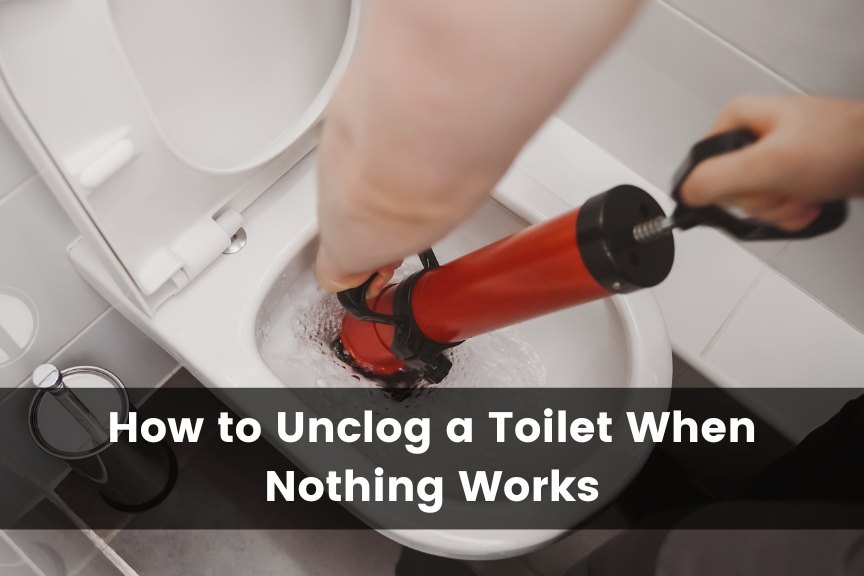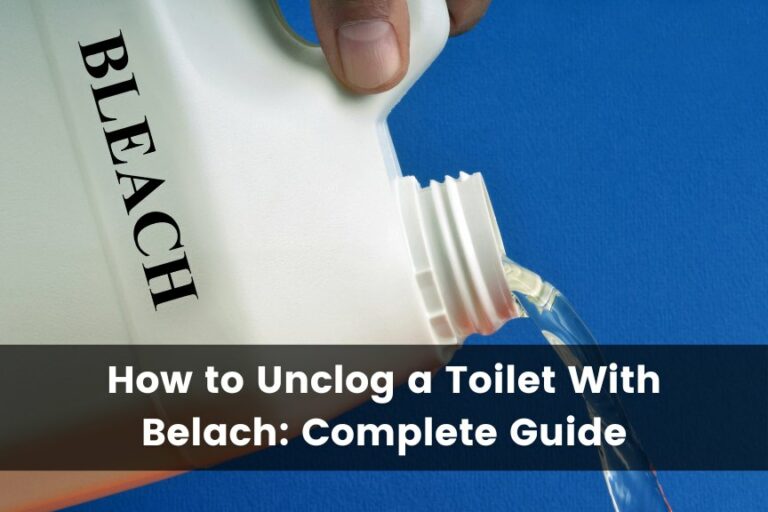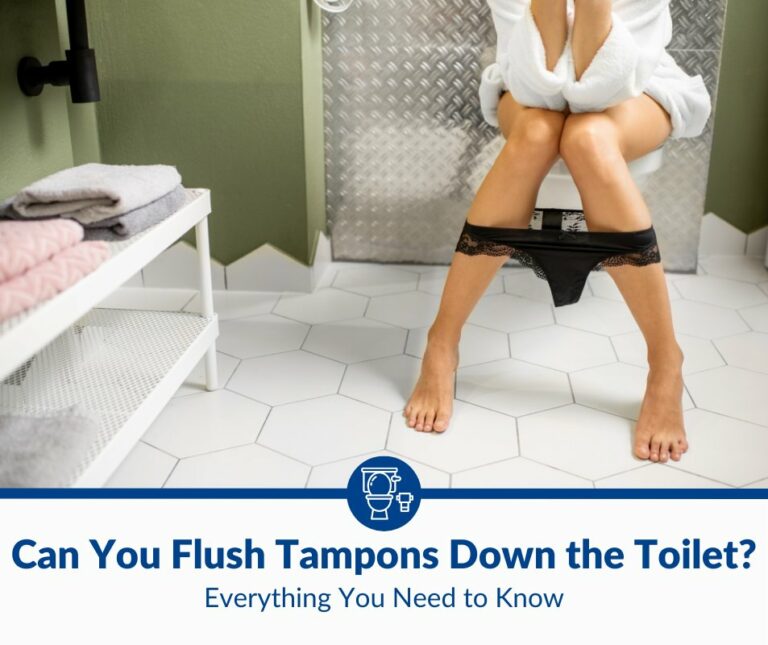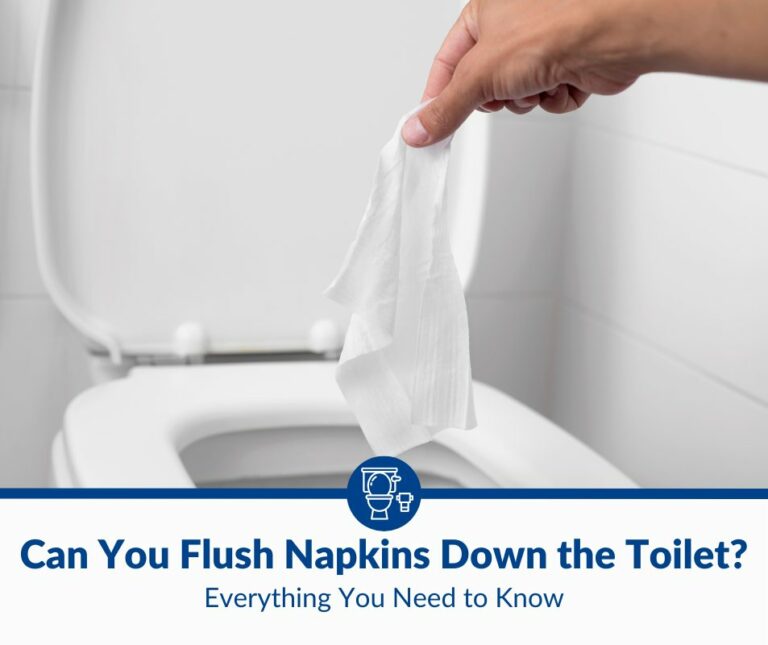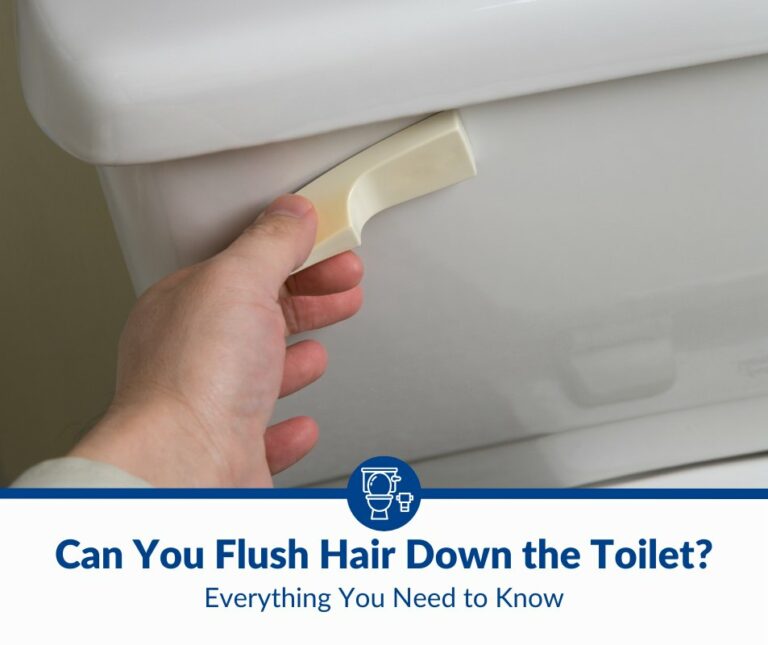How to Unclog a Toilet When Nothing Works: 10 Effective Ways
Nothing can prepare you for the frustration of dealing with a clogged toilet. In addition to being extremely inconvenient for your entire household, having an overflowing stinky toilet is horribly embarrassing when guests are over.
Things get even worse when you try to fix the issue with some elbow grease, only to find that the stubborn clog isn’t clearing up. The job is already gross, but now you’re left wondering how to unclog a toilet when nothing works!
To unclog a toilet when nothing works, some of the most effective solutions include using a plunger, a plumbing snake, a plastic bottle, or baking soda and vinegar mixture. You can also try hot boiling water and dish soap mixture, a wire coat hanger, a suction cup, an enzyme cleaner, a chemical drain cleaner, or a wet and dry vacuum cleaner.
In today’s guide, I’ll explain each of the 10 methods in simple steps to help you get your toilet back to smooth sailing. Let’s get started!
What Clogs a Toilet?
Various reasons can cause a clogged toilet, but one of the quickest and most common culprits is filling the toilet with too much toilet paper and then flushing it.
Although toilet paper is biodegradable and will eventually break down in the pipes, trying to flush down too much of it can easily cause clogging even if you’re using 1-ply toilet paper.
As such, you should never let toilet paper pile up in your toilet. Instead, make sure to flush it down after each use.
That said, clogged toilets can also be the result of people throwing items down toilets that have no business being there and then flushing.
Here’s a list of common household objects that can cause a clog if flushed down a toilet:
- Feminine hygiene products
- Coffee grounds
- Medications
- Paper towels
- Hair
- Kitty litter
- Heavy oil
- Food waste
- Grease
- Cotton balls
- Toys
- Grease
- Floss
- Baby wipes
- Diapers
As you’ve probably noticed, most items that can cause a clog when flushed down a toilet aren’t biodegradable.
A clogged toilet can be a source of extreme inconvenience for your entire household, especially if you’re rolling with one bathroom only. In this case, you’ll need to put everything else on hold until you get that clog cleared up.
Additionally, having a clogged toilet can be incredibly embarrassing when guests are over. Just imagine walking into the bathroom of a friend’s house and coming face to face with a stinky, overflowing toilet!
Not to mention, a clogged toilet is a serious health hazard. A clogged toilet can cause foul odors in no time, turning the whole bathroom into an unusable room.
Also, a clogged toilet is a breeding ground for several types of bacteria that can easily make their way onto the floor and around the toilet bowl. This can lead to a range of nasty diseases such as E-coli, Campylobacter, and Salmonella.
Top 10 Solutions for Clearing a Stubborn Toilet Clog
Now that you’re familiar with the reasons and consequences of a clogged toilet, let’s talk about the ways you can clear it up when conventional methods don’t work:
1. Use a Plunger
The first resort to unclogging a stubborn toilet is using a plunger. This solution is among the most tried and tested, so there’s a huge chance it’ll fix your bathroom situation.
You probably have a plunger lying around the house for emergency drain unclogging, so whip it out to use on your clogged toilet. Usually, it’s an easy process that takes minutes to complete.
Whether you own the budget-friendly version with flange or the more expensive heavy-duty version, the procedure is typically the same.
- First, put on some rubber gloves to protect your hands from getting splashed with toilet water. For extra protection, wear a long-sleeved shirt as well.
- After that, grab the handle of the plunger and put the rubber section inside the toilet bowl.
- Maneuver the rubber section until you create a totally airtight vacuum.
- Next, start slowly pushing the plunger down. Add more force as you continue pushing.
- Keep pushing and adding force until you achieve an even tighter vacuum and then pull the plunger out in one swift motion.
Once you pull the plunger out, the clog should start loosening up. Depending on the size and stubbornness of the clog, you may need to repeat the previous steps a few times before the clog is loosened enough.
You’ll know you’re done when everything inside the toilet starts flowing down the drain into the drain pipes. Also, the flushes following this process will be notably easier and smoother.
That said, the plunger method may not be very effective against certain types of clogs and plugs. If that’s the case, try the other solutions coming up.
2. Use a Plumbing Snake
Many homes with functioning toilets keep a plumbing snake around for easy, cheap, and quick toilet cleaning.
A plumbing snake, also known as a closet auger, is a flexible wire that you can maneuver to reach deep down the toilet’s drain for thorough cleaning.
Typically, this wire is wrapped in a rubber coating to protect the porcelain toilets from getting scratched or damaged as you push the plumbing snake down the drain.
Here’s how to use a plumbing snake to clear up a stubborn clog:
- Start by putting on some rubber gloves to protect your hands from getting splashed with toilet water. For extra protection, wear a long-sleeved shirt as well.
- Next, insert one end of the plumbing snake tool into the toilet bowl and gently push it down.
- Keep pushing the plumbing snake farther down the toilet’s drain until you feel some resistance.
- Continue to push the snake tool against the resistance, making sure to add a twisting motion in a clockwise direction. This will help the plumbing snake unlodge the clog and push it into the drain pipe.
- Stop pushing and twisting the plumbing snake once you can’t feel resistance anymore and the tool is moving freely.
- Lastly, flush the toilet and notice the flow of the water. If it’s faster than before using the plumbing snake, then you’ve managed to clear up the clog. If the flow did improve, repeat the previous steps.
3. Try a Plastic Bottle
You can try using a plastic bottle to unclog a toilet. The idea here is to create water pressure that’d force the clog out of its jam.
Keep in mind that this solution could get messy, so make sure you put on rubber gloves and a full-sleeved shirt to protect your hands and arms from getting splashed with dirty toilet water
To kick off this unclogging process, start by using a container to transfer water from the toilet bowl into a bucket. Repeat this several times to remove as much toilet water as possible.
After that, grab a large plastic bottle and fill it with warm water. Then, cover the opening of the bottle with your thumb.
While still holding your thumb over the opening, fit the top section of the bottle into the outlet at the bottom of the toilet.
The next step is to take off your thumb and squeeze the bottom of the bottle at the same. This will result in a strong flow of warm water shooting down the pipe at high pressure, potentially loosening the clog.
4. Apply Baking Soda and Vinegar Mixture
The mixture of baking soda and vinegar is popular as a cleaning concoction but did you know that you can also use it as an effective solution to clear up a clogged toilet?
This is another simple method that uses items you probably have lying around the house and usually doesn’t take long to give you results.
Before you start, make sure you have white vinegar, baking soda, cups, a container, and water. With these materials and tools, you’re ready to cook up the draining mixture as follows:
- Start by pouring 2 cups of water into the container.
- Next, add 1 cup of baking soda and mix it well with the water.
- Once properly mixed, pour the mixture into the toilet bowl.
- After that, pour 2 cups of vinegar into the toilet bowl.
You should see bubbles forming in the toilet bowl as a sign of the reaction between vinegar and baking soda. This reaction is what will loosen up the clog and enable water to flow without hiccups.
- Give the mixture around 15 to 30 minutes to work itself deep into the toilet drain. I recommend doing some chores around the house as you wait.
- Don’t flush the toilet after this method until 6 to 8 hours have passed.
Compared to the plunger solution, the baking soda and vinegar mixture can reach deeper sections of your toilet drain.
If you see some residue left behind in the toilet bowl while waiting, pour a gallon of boiling water into it. This will help dissolve the mixture residue.
5. Apply Hot Boiling Water and Dish Soap Mixture
One of the most effective solutions to unclog a toilet is none other than boiling water and dish soap. It’s so simple and readily available in any household, but it’s pretty ironic how many people forget about it!
Start by boiling a gallon of water and then let it sit for a few minutes so it cools down to a warm temperature. While waiting for the water, grab some dish soap and cut it into pieces then throw them into the toilet bowl.
Once the water is warm, pour it into the toilet bowl gently. Then, allow the mixture to sit inside the toilet for 10 to 15 minutes as the combination works to loosen the clog.
Finally, flush the toilet to get rid of the soap mixture along with the broken-down clogs.
6. Use a Wire Coat Hanger
This easy method is similar to using a plumbing snake, but you’ll be working with a wire coat hanger instead. It’s particularly effective if the clog is just a few inches down the toilet’s drain.
Here’s how to use a wire hanger to clear up a stubborn clog:
- Start by loosening up the wire coat hanger and then straighten it.
- Wrap one end of the wire with an old cloth and secure it in place using duct tape. This will protect the porcelain finish of your toilet from getting scratched or damaged as you push the wire down the drain.
- Put on some rubber gloves to protect your hands from getting splashed with toilet water. For extra protection, wear a long-sleeved shirt as well.
- Next, insert the clothed end of the wire into the toilet bowl and gently push it down.
- Keep pushing the wire farther into the toilet’s drain until you feel some resistance.
- Continue to push the wire against the resistance, making sure to add a twisting motion in a clockwise direction. This will help loosen the clog and push it into the drain pipe.
- Stop pushing and twisting the wire once you can’t feel resistance anymore and the tool is moving freely.
- Lastly, flush the toilet and notice the flow of the water.
If it’s faster than before using the wire, then you’ve successfully cleared up the clog. If the flow did improve, repeat the previous steps.
7. Use a Suction Cup
A handy unclogging solution when traditional methods fail is suction cups. These can easily rid your toilet drain of debris, small pebbles, and other small plugs.
If you don’t have suction cups, you’ll need to buy some first. Then, put on some rubber gloves to protect your hands from getting splashed with toilet water.
Next, place the suction cup over the hole at the bottom of the toilet bowl. The closure needs to be airtight to achieve a vacuum that doesn’t let air pass through.
After that, push and pull firmly while maintaining the airtight seal to create the suction effect. After a couple of minutes, the cup will suck the clog out from the drain.
8. Suck With a Wet and Dry Vacuum Cleaner
A more extreme method to unclog a toilet is to use a wet and dry vacuum cleaner.
This can be a bit frustrating and disgusting because you’ll get rid of the clog by sucking it out. But no one can deny that it’s one of the most effective solutions out there.
Wet and dry vacuums come in many models with varying power ratings. You can choose one depending on your budget, but the more heavy-duty it is, the more satisfying the result.
- First, put on some rubber gloves to protect your hands from getting splashed with toilet water.
- Then, fire up the “wet” mode on the vacuum and use it to suck out all of the water inside the toilet bowl. This will help the machine remove the clog faster.
- Once the water is gone, turn the vacuum off and insert the hose into the toilet’s drain.
- Push the hose gently into the hole for a few inches. Try wrapping the flexible hose in an old rag or towel to create a bit of a suction effect.
- After that, turn on the vacuum and run it for a minute or two so it sucks out the clog.
- Finally, flush the toilet and notice the flow of the water. If it’s faster, then you’ve successfully cleared up the clog. Otherwise, repeat the previous steps or try a different method.
9. Pour an Enzyme Toilet Cleaner
If you’re dealing with stubborn toilet clogs that won’t loosen, you may want to try applying an enzyme cleaner. This liquid contains enzymes that can break down organic waste material, effectively unclogging your toilet.
As such, if the plug isn’t organic waste, this method won’t work and you’ll need to use a different solution.
Check the label on the product’s container for recommendations on the amount you should use for unclogging a toilet. Also, check for any specific instructions you need to follow.
Next, pour the enzyme liquid into the toilet bowl, wait for the set time (usually a few minutes), and then flush the toilet to see the result.
10. Pour a Chemical Drain Cleaner
If you don’t mind using chemicals, then you can try using a commercial drain cleaner.
These products typically contain caustic soda, also known as sodium hydroxide, and act by softening solid substances clogging the toilet.
The exact steps to use chemical drain cleaners depend on the brand and type of product you buy, but all of them can be toxic to people and pets if ingested, so be very careful when storing them.
How to Prevent Toilet Clogging
Here are some tips to save yourself the hassle of a clogged toilet:
- Don’t flush dirty cleaning/mopping water down the toilet.
- Double flush the toilet more often.
- Keep the toilet tank clear.
- Avoid using too strong chemical toilet cleaners.
- Keep an eye on tree roots growing near your plumbing system.
- Schedule plumbing inspections twice a year.
Wrapping It Up
There you have it, a detailed guide on how to unclog a toilet when nothing works. If you try all the methods we listed today and none of them is successful, then there’s nothing you can do about it except call in a professional plumber.

